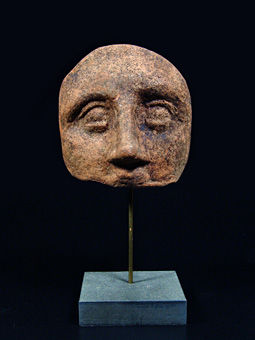|
Anatomical votive model depicting
the upper part of human face.
Moldmade with heavy-lidded eyes, a prominent nose and suggested upper lip.
The mask-like plaque with curved upper edge, straight bottom and sides. The
plain back with old mounting.
The Etruscans knew a great variety of votive terracottas, which they placed in
their temples as thanksgiving offerings or wishes for healing.
According to Oberhelman, the intrinsic meaning of offered faces is harder to
interpret, as they may refer to skin conditions ranging from pimples and acne to
diseases of the nose and the sinuses.
For a closely related example, cf. acc. no. 10.4.84.51S 849 in the Liverpool
National Museums database.
Intact and fine. With good detail and dendrite-like soil deposits.
H. 9.6 cm (3.8 in)
W. 9.6 cm (3.8 in)
Swiss art market until 2001, thence Swiss private collection, Biel.
Sold
650 USD
|

Click above for larger
pictures -------- |
|
Literature: Steven M. Oberhelman. "Anatomical Votive Reliefs as Evidence for
Specialization at Healing Sanctuaries in the Ancient Mediterranean World", pp.
47-62 in: Athens Journal of Health, Vol. 1, Issue 1, March 2014.
|
